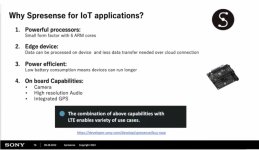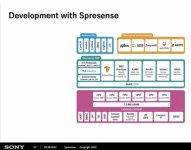Howdy Gang!
Following on from Cerence's 25th Annual Needham Growth Conference (as discussed above), I've just had the opportunity to take a peek at the Cerence Investor Day Destination Next pdf which you can access here if you wish to
https://cerence.gcs-web.com/static-files/4fd79f3e-2c0a-429a-841e-dcc68fc52e83
So the way I see now it is that AKIDA is 99.999999% likely to be incorporated in the "Cerence Immersive Companion" and I'll explain why.
Firstly, you'll see on one of the slides I've posted it lists the "New Innovations" including
enhanced in-cabin audio AI, surroundings awareness, teachable AI, and a multi-sensory experience platform in addition to other features. These New Innovations will be rolled out in FY 23/24.
Secondly, there's a slide that shows Niils Shanz and the slide highlights his work on the MBUX, hyperscreen and "Hey Mercedes" voice assistant.
Thirdly, remember at the Cerence's 25th Annual Needham Growth Conference when Stefan Ortmanns said in relation to NVDIA something like "So you're right. They have their own technology, but our technology stack is more advanced. And here we're talking about
specifically Mercedes where they're positioned with their hardware and with our solution." I believe that this comment was made in reference to the Vision EQXX voice control system which is what I think is being referred to by Cerence as the new "enhanced in-cabin audio AI" which will roll out in FY23/24 as part of the Cerence Immersive Companion.
Fourthly, another slide shows "Multisensory Inputs" which includes full HMI solution integrating multi-modal inputs (incl. conversational AI, DMS, facial, gaze, gesture, emotion, etc.) and multi-modal outputs (incl. voice, graphic, haptic, vibration,
etc.) I bolded the ect because I thought that could be hinting at smell and taste.
Fifthly, Stefan Ortmans said that Cerence's technology is more advanced than NVDIA's and that Qualcomm are using it too, so that rules out NVDIA and Qualcomm from being the magic edge computing ingredient.
Sixthly, Arm and Cerence are partners.
Seventhly, everything adds up nicely in terms of functionality, time-lines and just the general vibe IMO.
Eighthly, DYOR because I often have no idea what I'm talking about.
B
 View attachment 27644
View attachment 27645
View attachment 27646
View attachment 27648
View attachment 27649
View attachment 27651
View attachment 27644
View attachment 27645
View attachment 27646
View attachment 27648
View attachment 27649
View attachment 27651




